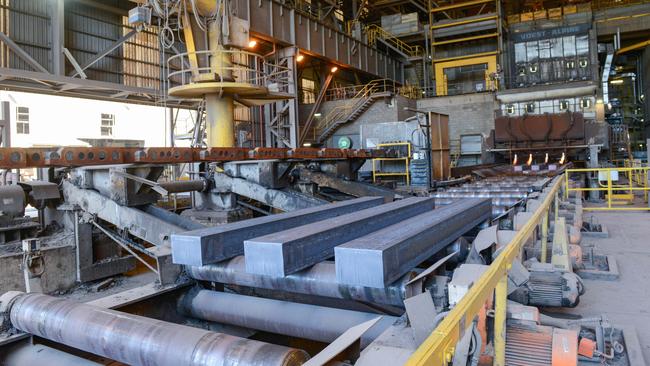Senex Energy inks gas supply deal with Whyalla Steelworks
British industrialist Sanjeev Gupta’s Whyalla Steelworks will buy gas from Senex Energy’s proposed $1bn Atlas project as part of the plant’s transition to renewables.

British industrialist Sanjeev Gupta’s Whyalla Steelworks in South Australia will buy gas from Senex Energy’s proposed $1bn Atlas project in Queensland as part of the plant’s transition from coal to renewables.
The conditional gas supply agreement will involve Liberty Steel sourcing gas from the Atlas project from 2025, and follows similar deals struck between Senex and users including BlueScope, Visy and glass bottle manufacturer Orora.
Green energy group ENGIE has also signed up for gas from the Atlas expansion, in Queensland’s Surat Basin, which was suspended earlier this year after the federal government intervened in the gas market.
The government’s mandatory code of conduct, governing sales of the fuel on the east coast, was brought into force earlier this month, prompting calls for producers to start making more supply available.
Senex, owned by South Korea’s Posco and Gina Rinehart’s Hancock Prospecting, has announced a string of customers for its Atlas project, suggesting the company is gearing up for development, pending final environmental approvals.

Liberty Steel is investing up to $500m in a new electric arc furnace and hydrogen-fuelled direct reduction plant at Whyalla, as it looks to phase out coal-based steelmaking at the site by 2025, and slash carbon emissions by 90 per cent.
The direct reduced iron (DRI) production plant would have a capacity of 1.8 million tonnes a year, processing local magnetite ore to produce low carbon iron.
It would initially use a combination of natural gas and green hydrogen as the reducing agent, before transitioning to green hydrogen as it becomes available at scale.
The low carbon iron would then be fed into the plant’s electric arc furnace with scrap, to produce steel for Australian infrastructure projects, and to service the growing global demand for low carbon iron.
Senex confirmed Liberty Steel had agreed to take 4 petajoules from Atlas, while ENGIE would take 9PJ, bringing the project’s total volume of contracted sales to close to 150PJ.
Senex CEO Ian Davies said the investment in new gas supply would support Australia’s transition to renewables.
“The transition to a cleaner energy future requires natural gas as an essential firming fuel – and that’s what Senex plans to deliver,” he said.

“When the wind doesn’t blow and the sun doesn’t shine, Senex’s natural gas will be there to help keep the lights on, factories turning and workers working.
“Senex is proud to be stepping up and playing its part in supplying Australia with the energy it needs.”
Australia is one of the world’s largest exporters of LNG, but the country’s east coast faces a looming shortage as traditional sources run dry and new developments struggle to secure necessary support.
The federal government last year imposed a cap on uncontracted gas at $12 a gigajoule and moved to establish a mandatory code of conduct.
The legislation sent shockwaves through the gas industry, which insisted the intervention failed to recognise and reflect the investment needed for exploration, but Labor said the intervention was needed to ensure the viability of the country’s manufacturing sector.
A series of concessions from Labor saw a relative calm descend across the market, but Senex remains unsure whether it will fall foul of the code of conduct.
Senex has ambitions to grow Atlas beyond the current expansion plans, which would technically remove its automatic exemption.

Even if Senex only proceeds with the first expansion phase, the company is also unsure about whether other gas development interests would push it over the automatic exemption threshold.
South Australian Energy Minister Tom Koutsantonis said the supply agreement with the Whyalla Steelworks and other South Australian facilities, including Orora’s glass bottle manufacturing facility near Gawler, would “safeguard local production”.
“The South Australian government is firmly of the view that gas is essential to a smooth transition to renewable energy,” he said.
“The state’s last coal-fired power plant closed in 2016 and the state government has been working to decarbonise our economy – we are on track to achieve around 85 per cent renewable energy by 2025-26.
“But the gap will ultimately be filled by natural gas – it is the only alternative to reliance on coal.”



To join the conversation, please log in. Don't have an account? Register
Join the conversation, you are commenting as Logout